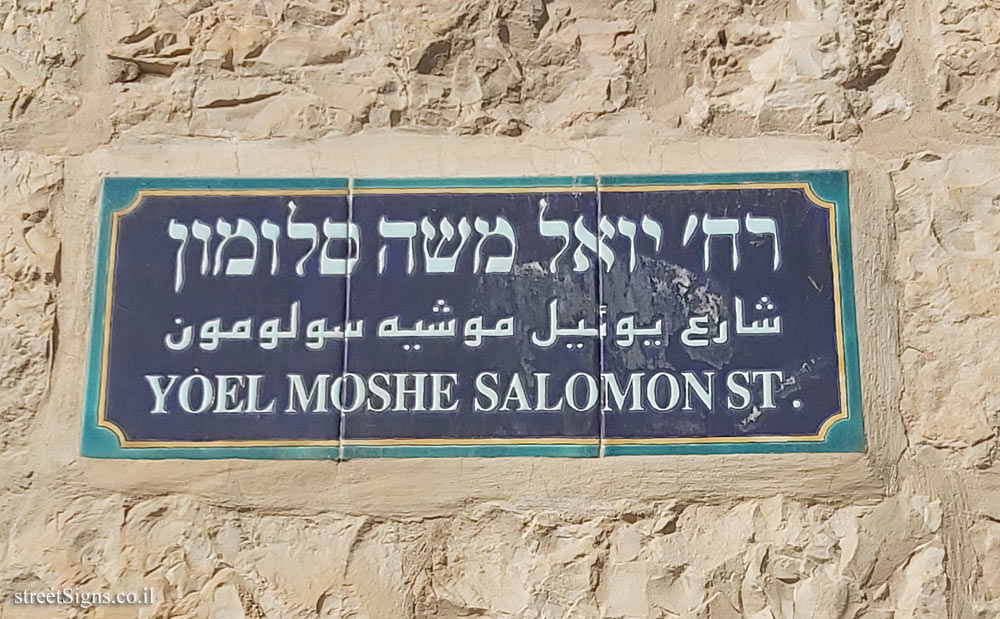The name of the neighborhood is displayed in the same format in which the street signs in this neighborhood appear
 Click for sign's details
Click for sign's details The following picture shows the plate enlargement in which the neighborhood is described
 Click for a larger image
Click for a larger image The house on which the signs (and which characterizes the building style of the neighborhood) was photographed that day
 Click for a larger image Translation of the text on the sign
Click for a larger image Translation of the text on the sign:
[The text in Hebrew is more detailed than the text that appears in Arabic and English]
Nahalat Shiv’a The third Jewish neighborhood outside the walls (preceded by Mishkenot Sha’ananim and the Machane Israel).
Founded in 1869 and named after its seven founders:
Michal Hacohen; Haim Halevi Kovner; Benjamin (Beinisch) Salant; Arie Leib (Lomzer) Horowitz; Yoel Moshe Salomon; Joseph Rivlin; Joshua Yellin. The seven came out due to overcrowding and disease between the walls and built their house on a plot of land of 24,000 square cubit (about 14 dunams).
The neighborhood is characterized by its small houses built around courtyards and in the center of which are cisterns. On either side of its winding, cobbled alleys stood dwellings, synagogues, yeshivahs, workshops, and shops.
Its proximity to the Jaffa Road, which was paved in the year of the construction of Nahalat Shiva, gave impetus to the development of commerce in the neighborhood.
Over the years, many houses were built in the neighborhood by immigrants from Bukhara, the Balkans and other countries, who created a special way of life there.
Since the beginning of the British Mandate, the demand has risen again to demolish the neighborhood and build high-rise office buildings and wide roads in its place. In 1988, the plan for preservation was approved: the neighborhood was restored, the infrastructure was renewed, the streets were re-paved and the facades of the houses were restored.
The works were carried out by the Jerusalem Municipality in 1988-1989 in collaboration with the Ministry of Tourism, under the direction of the Department for the Improvement of the City and through the Company to Open East Jerusalem.
[Map of the neighborhood indicating the following places:
1. The first house in Nahalat Shiva.
2. Beit Yoel Moshe Salomon
3. Nahalat Yaakov Synagogue
4. Ohel Yitzhak Synagogue
5. The courtyard and cistern
6. Shaarei Zion Yeshiva
7. "Baharav" Hotel
8. Neighborhood Stove]
[Photo of the neighborhood founding certificate]

 Click for sign's details
Click for sign's details  Click for a larger image
Click for a larger image  Click for a larger image
Click for a larger image